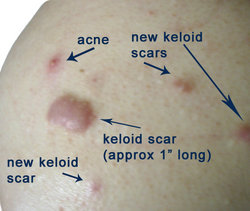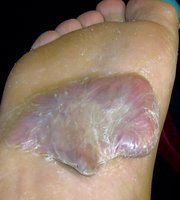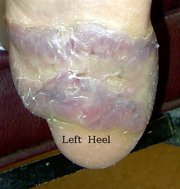Winning the War Against Hair Loss
If you've ever been worried that your hair is falling out, you might be right! Today, as many as two-thirds of all women experience hair loss. In some cases we can blame genetics, in others we can only blame ourselves. Chemicals (e.g. relaxers, dyes, etc.) are the primary cause of hair breakage, according to Rodney Barnett, a Certified Trichologist in Dallas, Texas, who specializes in hair and scalp problems. And he notes most of the other damage is self-inflicted. "Women damage their hair with too much artificial heat from constant blow-drying and using a curling iron every day," says Barnett.
IT'S IN THE GENES
Some women begin losing their hail especially as they approach menopause, due to a genetically linked condition known as androgenic alopecia. Alopecia occurs when estrogen levels decline to the point where the remaining testosterone in a woman's body causes the hair follicles to shrink, resulting in thinner hair.
There are several steps women can take to combat hormonal hair loss. By applying rninoxidil to their scalp, women can reverse the alopecia process so that the hair follicles are no longer shrinking. Minoxidil must be used continuously or the problem will reoccur. Some women try to restore their hormone balance by taking prescription estrogen orally or applying it topically. There are risks associated with hormone therapy and women should consult their physicians about this option. Barnett says women can also try natural products to build estrogen levels. "Black cohosh is a great natural estrogen made from a plant," says Barnett. "It mimics your body's own estrogen without the side effects from prescription hormones."
HAIR DO'S
Here are some ways to be good to your hair:
* Use wide-tooth combs, especially on natural hair
* Avoid harsh hair restraints like rubber bands
* Don't put grease on your scalp; it will only clog your pores
REGROW HAIR WITH WOMEN'S ROGAINE[R]
NOW IN NEW SPRING BLOOM SCENT[TM]
You are not alone. Millions of women have thinning hair, mostly because of heredity. Rogaine contains minoxidil, the only FDA-approved ingredient proven to regrow hair in women, and now Rogaine is available in a soft, floral scent.
Women's Rogaine helps to stimulate and enlarge miniaturized hair follicles, reversing the thinning process. Rogaine is clinically proven to regrow hair in about 60% of women and 86% of women tested preferred the new Women's Rogaine with Spring Bloom Scent.
Don't agonize over thinning hair. Try the #1 dermatologistrecommended brand to regrow hair in women. Women's Rogaine with Spring Bloom Scent is available in major drug stores and grocery stores nationwide.
For more information, visit www.Rogaine.com.
Say No to Scars
Still sporting that scar from the time you fell off of your bike in elementary school? Chances are pretty good if you're over the age of 10, you've got a scar For many Black women, acquiring these unsightly marks is all too easy "Scarring is very prevalent among African-American women," says Dr. Wendy Roberts, Founder of Desert Dermatology Medical Associates in Rancho Mirage, California. "The pigment which comprises African-American skin is very sensitive and when it's damaged, it tends to respond by changes in color."
TACKLE SCARS FROM [HE START
Scarring is actually the skin's way of repairing itself. Scars form when the body injects collagen, a glue-like tissue, into the damaged area to strengthen and protect it. While scars may be a noble gesture on nature's part, most people would prefer to live without them. If you fall down and injure yourself, there are several steps you can take to prevent or minimize scars. Keep the wounded area moist and clean; dry, open wounds are more prone to scarring and infection. Pressure bandages can help prevent bad scars and help flatten existing scars when used on a regular basis for several months. If your injury is deep, visit a doctor to determine if you need stitches.
COMBAT KELOIDS
Keloids are among the most common types of scars that appear on darker skin. The thick, often dark brown, irregular scar tissue usually develops after a burn, cut or scratch and grows outward, extending beyond the original wound. Sometimes a bad case of acne can leave a woman with unattractive keloids on her face. This kind of scarring can be emotionally distressful, but thanks to several modem-day options, there's no reason to suffer with a bad scar. "You can really get scars looking smooth now with all of the lasers that we have coupled with the topical treatments," says Dr. Roberts. "And of course, we still have the tried and true steroid injections. There's a lot of new technology available; these are very exciting times for scar treatment."
TIPS FOR REDUCING SCARS
* Wear protective clothing and gear for rough activities
* Don't pick at ache or sores--this can lead to scars
* Consult a dermatologist with extensive experience in scar therapy to treat bad scars
* Before having surgical procedures, ask your doctor about the risks of scarring
CURAD SCAR THERAPY--THE CLEAR SOLUTION TO RESUDE SCARS
WHILE TIME HEALS MOST WOUNDS, SCARS USED TO BE FOREVER.
Keloid and reddened scars can occur for many reasons--from accidental cuts and burns to surgical procedures such as Caesarean sections. For many women, these scars are more than a nuisance; they're a source of embarrassment, discomfort and even emotional anguish.
Now, with Curad Scar Therapy Clear Pads, you don't have to live with unsightly scars and you don't have to endure scar reduction pads that don't match your skin color. Unlike other products on the market, Curad Clear Pads are virtually invisible so they're ideal for exposed areas such as the face and hands. And they are perfect for any skin color because they blend with your natural skin tone.
Curad Clear Pads can be worn every day for fast-acting results. Within eight weeks, you'll see a reduction in raised, colored and keloid scars. Curad Clear Pads are clinically proven and easy to use.
Don't suffer another day with unwanted scars. Choose the clear alternative to better looking skin.
For more information, visit www.curadusa.com
COPYRIGHT 2005 Essence Communications, Inc.
COPYRIGHT 2005 Gale Group




